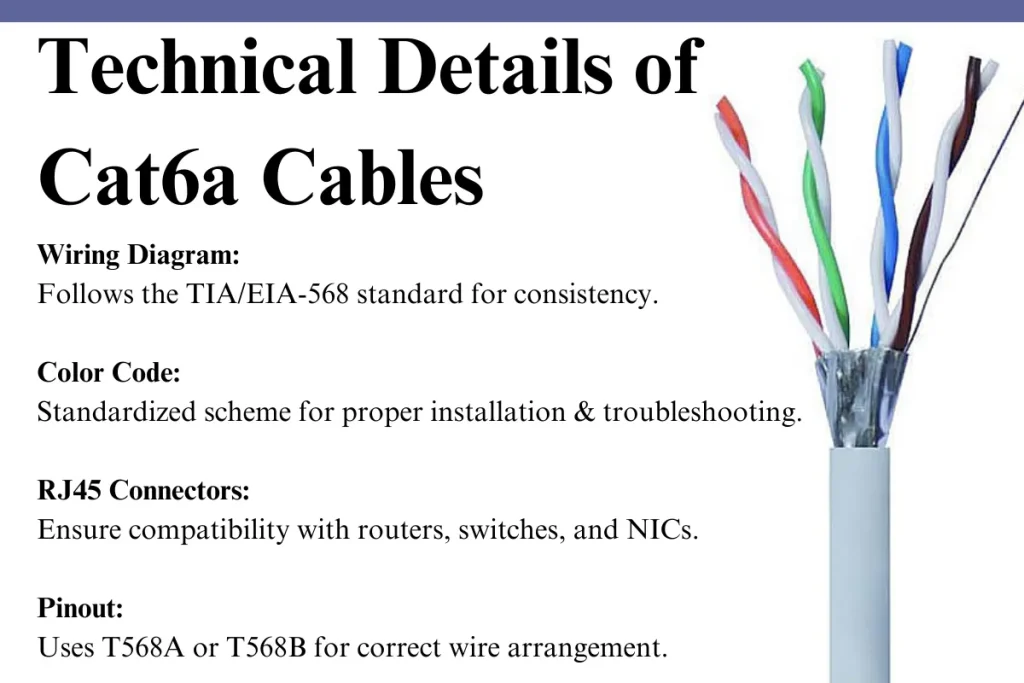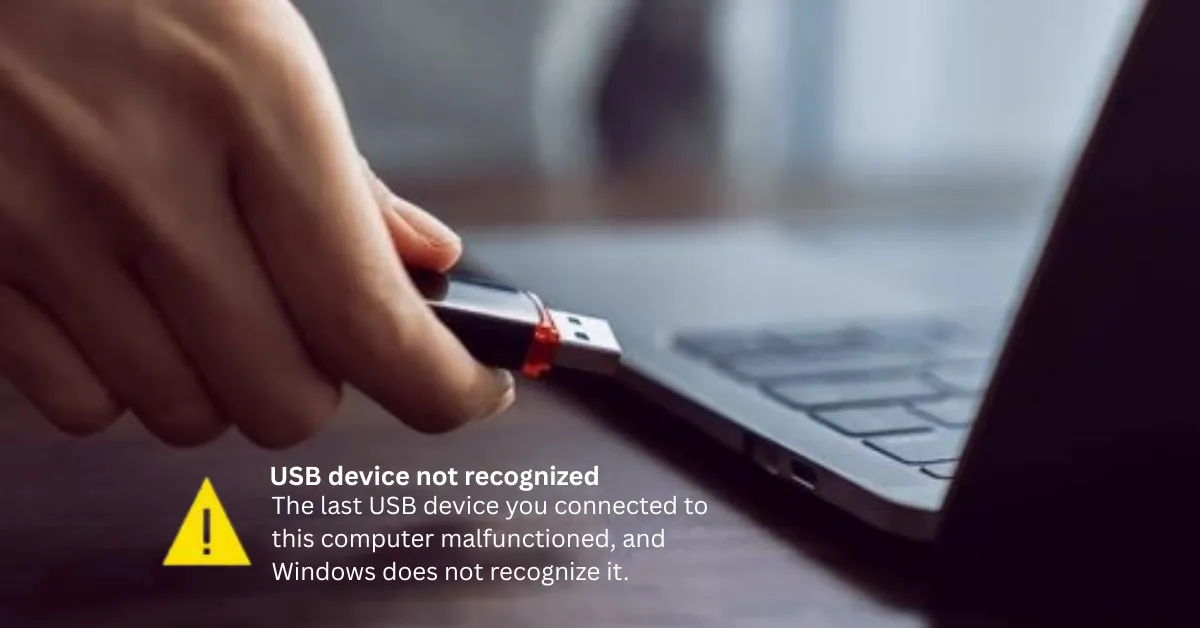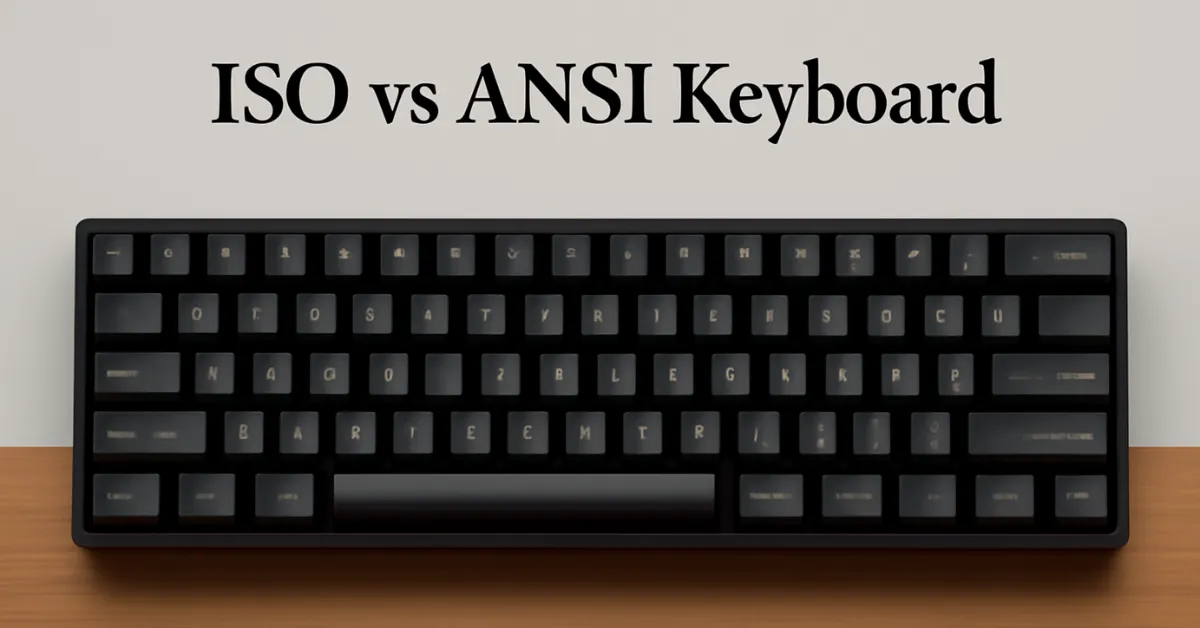Cat6a Cables Explained | Speed, Specs, Benefits & Cat6e Comparisons
Choosing the right Ethernet cable can be daunting with so many options available, leading to confusion and suboptimal network performance.
Fortunately, Cat6a cables offer a robust solution, ensuring high-speed data transmission, reduced interference, and enhanced overall network efficiency.
Cat6a Cable Specifications

Cat6a cables, also known as Category 6a cables, are designed to support higher data rates and greater bandwidth. They can handle speeds of up to 10 Gbps over a distance of up to 100 meters, making them an excellent choice for modern high-performance networks.
Cat6a cables are a popular choice for Ethernet networks, especially when paired with high-quality patch or slim patch cables for compact spaces and efficient cable management.
One of the standout features of Cat 6a cables is their ability to minimize crosstalk and electromagnetic interference (EMI). This ensures a stable and reliable connection, even in environments with high levels of electronic noise. The improved shielding and insulation of Cat 6a cables contribute to their superior performance.
For demanding environments, shielded patch cables are often paired with Cat6a to minimize interference and ensure stable data transmission, particularly in high-speed setups.
Reliable cabling is crucial for smooth communication platforms, ensuring every chat bubble and message is delivered without lag during high-traffic usage.
Advantages of Cat6a Cables

Cat6a offers several advantages over other Ethernet cables, making it a preferred choice for high-performance networks. One of the primary benefits is their ability to support higher data rates. With speeds of up to 10 Gbps, Cat6a is well-suited for modern applications that demand fast and reliable data transmission.
Another significant advantage is reduced crosstalk and electromagnetic interference (EMI). Cat 6a cables feature improved shielding and insulation, which helps minimize interference from other electronic devices. This results in a more stable and reliable connection, ensuring consistent network performance.
Additionally, Cat 6a cables can transmit data over longer distances without compromising speed or performance. This makes them ideal for large installations, such as data centers and office buildings, where long cable runs are common. Comparing Cat 6a cables with older options like Cat5 cables reveals significant improvements in speed and performance
Comparing Ethernet Cables

Cat 5 vs Cat 6a
Cat5 cables are older and support speeds of up to 100 Mbps, making them less suitable for today’s high-speed network requirements. In contrast, Cat 6a cables can handle speeds of up to 10 Gbps, offering a significant performance boost. When evaluating network performance, understanding the differences between Cat5 and Cat6 cables is crucial.
Cat 5e vs Cat 6a
Cat5e cables, an enhanced version of Cat5, can support speeds of up to 1 Gbps. While this is sufficient for many home networks, Cat 6a cables provide even greater speed and bandwidth, making them a better choice for high-performance applications.
The advancements from Cat5e to Cat 6a cables showcase the rapid evolution in networking technology.
Cat 6 vs Cat 6a
Cat6 cables are capable of supporting speeds of up to 10 Gbps but only over shorter distances (up to 55 meters). Cat 6a cables, on the other hand, can maintain these speeds over distances of up to 100 meters, making them more suitable for larger installations.
Cat 6a cables are an upgrade over Cat6, offering extended distance capabilities and reduced interference.
Cat 6a vs Cat 7
Cat7 cables offer similar performance to Cat 6a cables, with speeds of up to 10 Gbps. However, Cat7 cables are more expensive and have stricter installation requirements. For most users, Cat 6a cables provide a more cost-effective solution without sacrificing performance.
Here’s a comparison table to illustrate the differences:
|
Feature |
Cat5 |
Cat5e |
Cat6 |
Cat6a |
Cat7 |
|
Max Speed |
100 Mbps |
1 Gbps |
10 Gbps |
10 Gbps |
10 Gbps |
|
Max Distance |
100m |
100m |
55m |
100m |
100m |
|
Shielding |
No |
No |
Yes |
Yes |
Yes |
|
Crosstalk |
Higher |
Moderate |
Lower |
Lowest |
Lowest |
|
Cost |
Low |
Moderate |
Moderate |
High |
Highest |
|
Installation |
Easy |
Easy |
Moderate |
Moderate |
Complex |
Technical Details

Cat6e Wiring Diagram
Cat6a cables feature improved wiring and shielding to reduce crosstalk and electromagnetic interference. The Cat6a wiring diagram follows the TIA/EIA-568 standard, which ensures compatibility and consistent performance.
Proper installation is crucial for achieving the best performance from the Cat6e wiring guide. This is essential to differentiate between verification and validation processes to ensure the integrity and performance of the network.
Cat6e Cable Color Code
Understanding the Cat6e cable color code is important for proper installation and troubleshooting. The color code follows a standardized scheme to ensure consistent wiring and performance. Properly following the color code helps maintain the integrity of the network and reduces the risk of errors during installation.
RJ45 Connectors and Compatibility
CAT 6a cables use RJ45 connectors, which are the standard connectors for Ethernet cables. These connectors ensure compatibility with a wide range of networking equipment, including routers, switches, and network interface cards.
When using Cat 6a cables, it’s essential to ensure that the connectors are properly crimped and installed to maintain optimal performance.
If you need custom lengths, custom ethernet patch solutions are available, while stock ethernet patch and stock patch cables are ideal for quick installations without custom orders.
Cat6e Pinout
The pinout for Cat 6a cables follows the T568A or T568B wiring schemes. These pinout configurations determine the arrangement of wires within the connector and ensure compatibility with various networking devices. Following the correct pinout is essential for maintaining the integrity and performance of the network.
Speed and Performance

Maximum Speed of Cat6e Cables
Cat 6a cables are designed to support maximum speeds of up to 10 Gbps. This high-speed capability makes them ideal for applications that require rapid data transfer, such as video streaming, online gaming, and large file transfers. The enhanced performance of Cat 6a cables ensures that data can be transmitted quickly and efficiently.
Distance Limits
Cat 6a cables can maintain their high-speed performance over a distance of up to 100 meters. This makes them suitable for larger installations, such as office buildings and data centers, where long cable runs are common.
The ability to transmit data over longer distances without compromising speed or performance is one of the key advantages of Cat 6a cables.
Practical Applications
What is Cat6e Cable Used For?
Cat6a cables are widely used in various settings due to their high-speed capabilities and reliable performance. They are commonly employed in both residential and commercial environments to support high-bandwidth applications such as video streaming, online gaming, and large data transfers.
Additionally, Cat 6a cables are often used in data centers, offices, and other large installations where stable and efficient networking is essential.
The advanced shielding in Cat6a cables often incorporates components designed to reduce interference from nearby magnetic metals and other environmental factors.
In commercial spaces, using plenum rated shielded patch cables is essential to meet building codes and maintain safe wiring, especially when routing through plenum spaces.
Cat6e Cable Lengths and Availability
Cat 6a cables are available in various lengths to suit different installation needs. Whether you require short patch cables for connecting devices within a rack or long cables for running through walls and ceilings, Cat 6a cables come in a range of sizes.
For example, Cat 6a cables can be found in lengths up to 1000ft, making them suitable for extensive installations. When selecting a Cat6a cable, it’s important to choose the appropriate length to minimize excess cable and maintain a clean and organized setup.
Choosing the Right Ethernet Cable
Factors to Consider
When selecting an Ethernet cable, several factors should be taken into account to ensure optimal performance and compatibility with your network. These factors include the required data speed, the distance the cable needs to cover, and the level of interference present in the installation environment. Additionally, it’s important to consider the cost and ease of installation.
Are Cat5e and Cat6 Interchangeable?
Cat5e and Cat6 cables are often interchangeable for many standard applications, but there are key differences to be aware of. Cat5e cables support speeds of up to 1 Gbps, while Cat6 cables can handle speeds of up to 10 Gbps over shorter distances.
For applications that demand higher speeds and reduced interference, Cat6 cables are the better choice. However, for basic networking needs, Cat5e cables can still be a viable option.
When planning cable runs, consider conduit capacity. For example, if you’re wondering how many in 1 inch conduit, the answer depends on the type and thickness of your ethernet patch cables.
Conclusion
Cat6a cables offer unparalleled performance and reliability, making them the go-to choice for high-speed and long-distance data transmission needs. Their ability to reduce interference and maintain stable connections ensures optimal network efficiency.
By choosing Cat 6a cables, you can future-proof your network and enjoy seamless, high-speed connectivity for years to come. Investing in quality cabling now will save you from potential network issues down the line.
FAQs
Is Cat 7 overkill?
For most home and small business networks, Cat7 cables can be considered overkill. Cat7 cables offer similar speeds to Cat6a (up to 10 Gbps) but come with stricter installation requirements and higher costs.
Unless you have specific high-performance networking needs, such as in a data center or large enterprise environment, Cat 6a cables should suffice for most applications.
What are the disadvantages of Cat6a cable?
While Cat 6a cables offer numerous benefits, there are a few disadvantages to consider:
- Cost: Cat 6a cables are more expensive than Cat5e and Cat6 cables.
- Thickness: Cat 6a cables are thicker and heavier due to additional shielding, which can make installation more challenging.
- Flexibility: The increased shielding and insulation can make Cat 6a cables less flexible and harder to bend, which may be a concern in tight spaces.
Why is Cat6a so expensive?
Cat 6a cables are more expensive primarily due to the enhanced materials and construction required to achieve their high performance. The additional shielding and insulation used to reduce crosstalk and electromagnetic interference contribute to the higher cost.
Additionally, the increased demand for high-speed networking solutions and the rigorous standards Cat 6a cables must meet also drive up their price.






